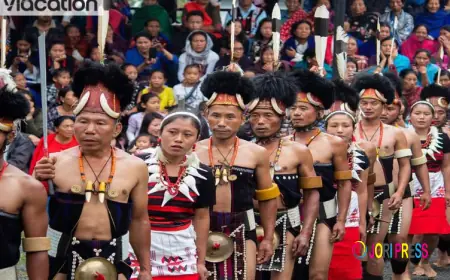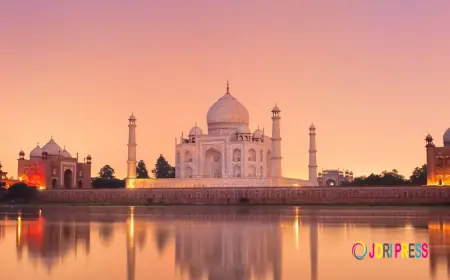Heritage Theme Tour Packages – Explore India’s Glorious Past
The stone is warm by mid-morning in Hampi. Footsteps echo between granite-pillared mandapas, where traders once sold horses, silk, and spices under the Vijayanagara Empire. In the quiet lanes of Chettinad, homes built a century ago still hold scent — of turmeric-stained wood, of brass polished with tamarind pulp.
India’s past is not behind glass. It’s lived. In markets that trace Mughal roadways, in stepwells that still fill each monsoon, in temples where rituals never paused.
In 2025, the most well-structured heritage theme tour packages don’t treat history as a checklist. They offer windows into how people lived, built, prayed, and governed — without reducing the past to bullet points.
What Heritage Means Here
Heritage in India is not always dramatic. It’s not just carved facades or royal tales. It’s a type of brick. A way of measuring land. A recipe that hasn’t changed in six generations.
The best heritage tours know this. They include conversation, not just commentary. They allow for sitting — in silence, in courtyards, in mosques and forts — long enough for the place to show itself.
Rajasthan: Not Just Palaces, but Systems
Rajasthan has long been framed as India’s heritage capital. And yes, its forts are among the most intact anywhere. But a deeper experience goes beyond photographs.
In Jodhpur, Mehrangarh Fort rises sharply above the city — but its courtyards still host performances, archives, and local guides who grew up in its shadow. A good heritage package here includes time in the blue city beneath — with its stepwells, homes built in symmetry with wind direction, and artisans who still hand-stitch leather goods without altering technique for the market.
Further south, Bundi offers murals that haven’t been retouched. In Shekhawati, the havelis speak more through their crumbling frescoes than any museum catalogue ever could.
The strongest heritage packages here balance formality and fluidity — planned access to palace hotels, yes, but also time in old temples where ceremonies continue unnoticed by guidebooks.
Tamil Nadu: Layered Stone and Lived Ritual
Tamil Nadu’s temple architecture carries scale — but not emptiness. In Madurai, the Meenakshi Amman temple pulses with daily life. Vendors sell jasmine garlands. Rituals take place in rhythm. It’s not a performance. It’s continuity.
A heritage tour that stops only for a photo misses the point. The correct approach builds in space — for following temple musicians, observing the kolam patterns redrawn each dawn, or noticing how the priests pause not for effect, but for alignment.
In Thanjavur, the Brihadeeswara Temple’s Chola-era stone carvings speak of a time when artists worked from memory, not measurement. Packages here often include visits to bronze-casting foundries still practicing the lost-wax method — not because it’s trendy, but because it works.
Elsewhere, Chettinad offers domestic heritage. The mansions here weren’t built to impress tourists. They were built to last — with lime plaster, Burmese teak, Athangudi tiles. And many still stand, with families who’ll show you the grain ledger books, if you ask the right way.

Delhi & North India: Empire in Layers
Delhi’s past doesn’t line up neatly. It stacks. Sultanate ruins beside Lutyens’ blocks. Mughal gardens beside metro pillars. But the stories hold.
In Mehrauli, the Qutub complex offers more than the minaret. The older, rougher ruins — tombs with uncut slabs, mosque pillars carved from earlier temples — show how empires absorbed, erased, and adapted.
A good heritage tour includes both Red Fort and the lanes behind it — where Urdu signage fades on storefronts, and kebab vendors still use recipes that date back to the royal kitchens. In Old Delhi, heritage isn’t just architecture. It’s food. It’s rhythm. It’s resistance.
Agra and Fatehpur Sikri often get bundled in. But strong itineraries allow for depth — visits with conservationists restoring inlay work, conversations with families still making marble lattice by hand, time to sit under the Buland Darwaza and hear your voice echo not from grandeur, but from scale.
Madhya Pradesh: Kingdoms You Didn't Learn About
Gwalior, Orchha, Mandu — these names don’t headline most India itineraries. But for heritage travelers, they offer texture.
Gwalior’s fort complex includes Jain sculptures, 15th-century palaces, and a still-functioning temple where local families perform rites that predate the walls. The nearby Scindia palace contrasts this with colonial excess — crystal chandeliers, billiard rooms, Belgian glass.
Mandu sprawls across a plateau — its baobab trees planted by African traders, its palaces built for both defense and romance. Jahaz Mahal, shaped like a ship between lakes, doesn’t feel restored. It feels paused.
The best heritage packages through MP include time in tribal museums, smaller architectural sites with no ticket counters, and town squares where people still gather to tell stories — not to narrate, but to remember.
Gujarat: Stepwells, Textiles, Salt
Heritage here is both urban and ecological. In Patan, the Rani ki Vav — an inverted temple built as a stepwell — carries stories in descending form: each level more sacred, more detailed, more hidden from the sun.
A heritage tour that pairs Patan with Modhera’s sun temple makes architectural sense — and a good itinerary includes time with local weavers, particularly the Patola sari makers, whose double ikat designs take months to finish.
Elsewhere, Kutch’s desert isn’t empty. It’s structured — with mud homes painted in geometric patterns, with salt pans that gleam under full moons, with looms and bells and dyed cloth that speaks of migration and memory.
What to Look For in a Heritage Tour Package
-
Slower Itineraries: If it promises ten monuments a day, it misses the point. Heritage requires stillness.
-
Local Interpretation: The best guides aren’t always the loudest. They’re often the ones who still live nearby.
-
Material Culture: Handicrafts aren’t souvenirs. They’re tools, garments, offerings. The right tour shows you the process — not just the price tag.
-
Food That Belongs: Meals cooked with heirloom grains, fermented curd, slow-cooked dals. Not five-star reinventions.
The Past Is Present — If You Know Where to Stand
Heritage in India is not archived. It lives — in the way temple lamps are lit, in how elders fold saris, in how inscriptions are worn smooth by hand, not weather.
The most valuable heritage theme tour packages in 2025 are not built for nostalgia. They’re built for noticing. And in a country where centuries often exist within a single street, there’s always something — someone — still holding the thread.
What's Your Reaction?
 Like
0
Like
0
 Dislike
0
Dislike
0
 Love
0
Love
0
 Funny
0
Funny
0
 Angry
0
Angry
0
 Sad
0
Sad
0
 Wow
0
Wow
0



















































